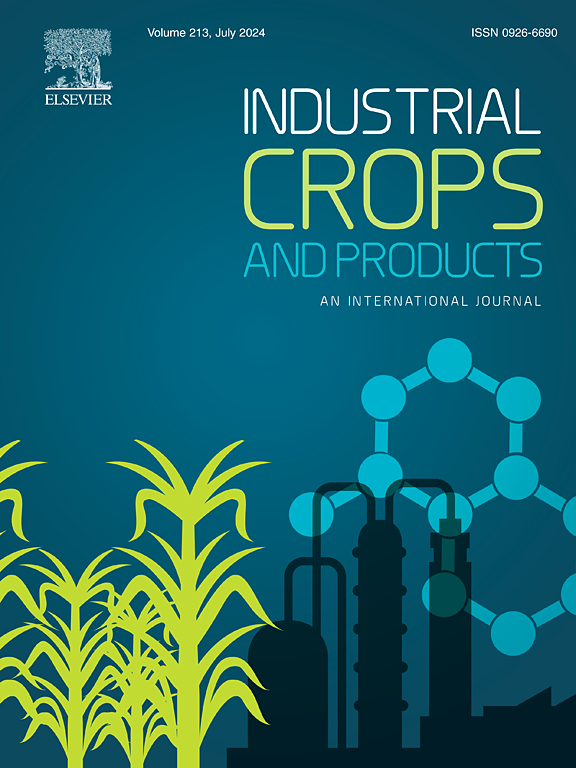Regulation of the cytokinin metabolic spectrum and morphogenesis in Quercus robur (L.) in vitro by exogenous cytokinins and activated charcoal
IF 6.2
1区 农林科学
Q1 AGRICULTURAL ENGINEERING
引用次数: 0
Abstract
The large-scale in vitro propagation of Quercus robur requires exogenous cytokinins (CKs); however, this process can cause physiological changes such as tissue and medium oxidation. Activated charcoal (AC) is often used to mitigate these effects. This study evaluated the de novo regenerative capacity, morphophysiological responses, and hormonal status of Q. robur shoots exposed to aromatic CKs—6-benzylaminopurine (BAP) and meta-topolin (mT)—either alone or in combination with AC. Shoots were cultured with four concentrations of BAP or mT (0, 2, 4, and 8 μM) and two AC concentrations (0 or 2 g L⁻¹) for 40 days, followed by morphophysiological and CK metabolic analyses. In the absence of AC, new shoots formed in media supplemented with CKs, whereas the H₂O₂ content was lower in CK-treated plants, regardless of the presence of AC. The presence of AC altered the morphogenetic response, promoting rooting even under BAP or mT exposure. Root formation was observed when CKs were absent (0 µM BAP or mT) and/or when 2 g L⁻¹ AC was added, irrespective of the CK concentration. The plants grown with AC presented increased levels of trans-zeatin (tZ) and its derivatives. In contrast, BAP-treated plants without AC accumulated N⁶-benzyladenine (BA) derivatives, although excess BA was converted into inactive forms. The anatomical status of the leaves affects the performance of the photosynthetic apparatus. Both BAP and mT effectively induced de novo shoot regeneration in Q. robur in vitro. However, AC inhibited BA-type CK accumulation while promoting tZ-type accumulation, highlighting its regulatory role in CK metabolism.

外源细胞分裂素和活性炭对栎体外细胞分裂素代谢谱和形态发生的调控
栎树体外大规模繁殖需要外源细胞分裂素(cytokinins, ck);然而,这一过程会引起组织和介质氧化等生理变化。活性炭(AC)通常用于减轻这些影响。本研究评估了暴露在芳香的cks - 6-苄基氨基嘌呤(BAP)和元topolin (mT)中或单独或与AC结合的红毛柏芽的新生再生能力、形态生理反应和激素状态。芽在四种浓度的BAP或mT(0、2、4和8 μM)和两种浓度的AC(0或2 g L毒血症)中培养40天,然后进行形态生理和CK代谢分析。在没有AC的情况下,在添加了ck的培养基中可以形成新芽,而在ck处理的植株中,无论是否存在AC, H₂O₂含量都较低。AC的存在改变了形态发生反应,即使在BAP或mT暴露下也能促进生根。当不添加CK(0 µM BAP或mT)和/或添加2 g L¹ AC时,无论CK浓度如何,都可以观察到根的形成。施用AC的植株反式玉米素(tZ)及其衍生物含量显著升高。相比之下,未经AC处理的植物积累了N 26 -苄基腺嘌呤(BA)衍生物,尽管过量的BA被转化为无活性形式。叶片的解剖状态影响光合机构的性能。BAP和mT均能有效诱导枸杞离体新生芽再生。而AC抑制ba型CK积累,促进tz型积累,突出了其对CK代谢的调节作用。
本文章由计算机程序翻译,如有差异,请以英文原文为准。
求助全文
约1分钟内获得全文
求助全文
来源期刊

Industrial Crops and Products
农林科学-农业工程
CiteScore
9.50
自引率
8.50%
发文量
1518
审稿时长
43 days
期刊介绍:
Industrial Crops and Products is an International Journal publishing academic and industrial research on industrial (defined as non-food/non-feed) crops and products. Papers concern both crop-oriented and bio-based materials from crops-oriented research, and should be of interest to an international audience, hypothesis driven, and where comparisons are made statistics performed.
 求助内容:
求助内容: 应助结果提醒方式:
应助结果提醒方式:


